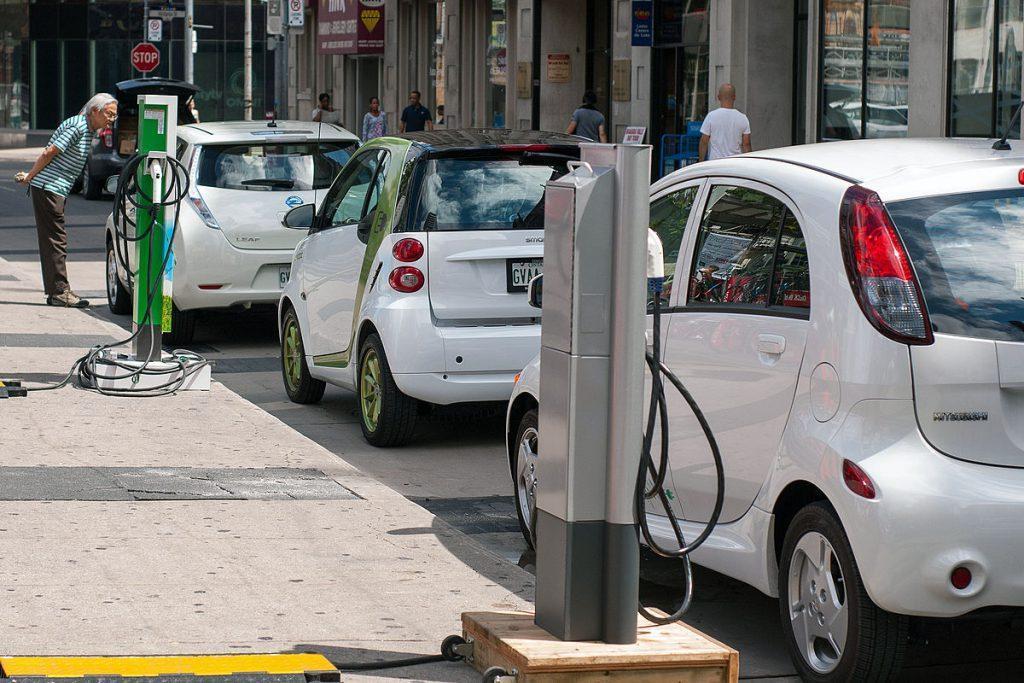By SAFE Policy Team
Today, Securing America’s Future Energy released its quarterly update to the Energy Security Fact Pack, a data-driven overview of the latest trends in energy security. The Fact Pack includes charts on domestic and global oil production and consumption patterns, oil market dynamics and prices, and up-to-date information on fuel efficiency and advanced fuel vehicles.
The latest Fact Pack highlights developments in the U.S. electric vehicle (EV) market, which is poised to see significant growth in the coming years as a result of new models, lower battery costs, increased range, and growing consumer awareness.
Demand for EVs has continued to rise in 2017, setting new records for purchases and vehicle model availability. Although six models currently account for nearly two-thirds of sales, consumers have a fuller range of choices with 37 models available, thanks to marked declines in battery technology costs and enhanced range.
The federal $7,500 EV tax credit has also been instrumental in driving these sales, accelerating consumer adoption at a time when auto companies have invested billions of dollars in research and development. The House eliminated the EV tax credit in its tax reform package, while the Senate kept the credit in its version of the bill—a difference that will need to be reconciled in conference. Maintaining the Section 30D EV tax credit is one of the most cost effective ways to reduce our oil dependence and the strain on our economic and national security that it entails.
Encouraged by the credit, consumer demand for both plug-in hybrid electric vehicles (PHEVs) and fully battery electric vehicles (BEVs) has remained strong, and the market is roughly evenly split between the two drivetrains.
Encouraged by the credit, consumer demand for both plug-in hybrid electric vehicles (PHEVs) and fully battery electric vehicles (BEVs) has remained strong, and the market is roughly evenly split between the two drivetrains. The new all-electric Chevy Bolt, released late last year with a range of 238 miles, has sold 17,000 vehicles this year and accounts for approximately 10 percent of 2017 plug-in vehicle sales. October was a comparatively slow month for the U.S. EV market, but total sales were still up a robust 20 percent year-over-year (y-o-y) to 13,709 units. October’s numbers were likely impacted by production bottlenecks related to Tesla’s Model 3.
International automakers saw bright spots: The Toyota Prius Prime gained market share with 1,626 units sold in October, accounting for approximately 12 percent of total EV sales. Volvo, which added the S90 to its lineup of two other PHEVs, is expected to become increasingly competitive in the EV space, announcing a partnership with Uber to fit 24,000 XC90 PHEVs with autonomous technology. Strong EV sales are more impressive in context, occurring despite relatively low gasoline prices and recent declines in total light-duty vehicle sales, which fell 1 percent y-o-y to 1.3 million units nationwide in October.
BEV efficiency and range continue to improve
The average driving range for 2017 EV models is now 140 miles, up from 96 in 2012, giving EV drivers more flexibility. At the same time, average costs have fallen considerably with more efficient batteries, allowing EV owners to save on fuel costs over time. The miles per gallon of gasoline equivalent (mpge) used to determine fuel economy of new BEV models averaged 111 in 2017, up 12 mpge from 2012 to 99 mpge, according to estimates by SAFE.
The trends of increased range at lower cost will drive continued growth in the sector. Bloomberg New Energy Finance’s (BNEF), for instance, says EVs will account for 50 percent of total vehicle sales in 2040. In the meantime, until they reach cost parity with vehicles with internal combustion engines, government support through rebates and tax credits should be maintained.
